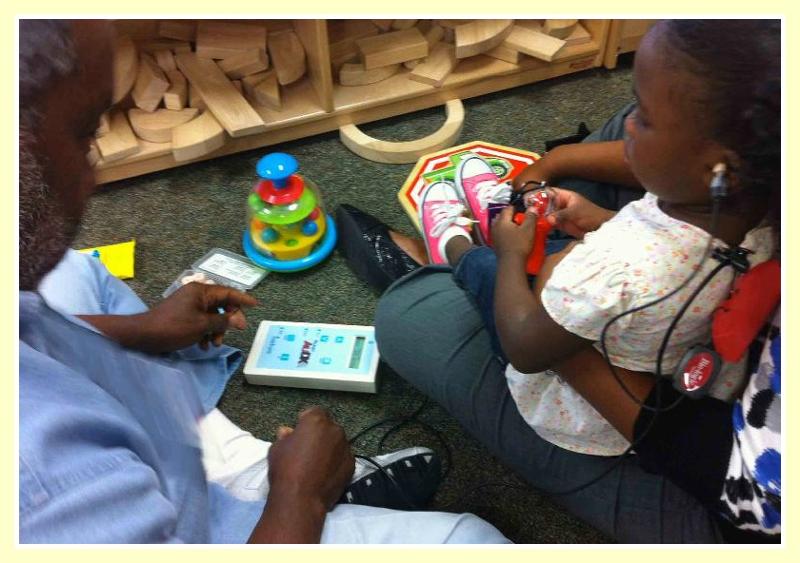Most tips for successful screening are applicable to
all settings. However, screening in home environments can present specific challenges. Screeners will need to be able to find appropriate ways to take charge of the environment and elicit the assistance of family members.
Environment: It may be necessary to take steps to limit noise in the home. That might include requesting that music be turned off or the volume on the TV be turned down. (Allowing the child to watch the visual images on TV or a computer monitor can be an effective screening strategy!) A screener may need to ask that noisy air conditioning units be turned off, or that individuals in the room limit their conversation.
It does not have to be completely quiet, but the screening will go more quickly if sources of loud noise have been eliminated. Likewise, it might be necessary to request that windows be closed if there is significant noise outside, such as automobiles, barking dogs, etc. Family mem

bers will usually be glad to comply with requests if they understand that it will help create a good screening environment.
It is ideal to conduct OAE screenings relying solely on battery power. However, if you are using a piece of equipment that can be operated while plugged into an AC outlet, as a backup strategy be sure to include a 3-prong to 2-prong converter in your screening kit because some homes do not have 3-prong outlets.
Assistance of Family Members: Sometimes the screening will be accomplished quickly and easily without involving family members. For example, if the child is already playing with toys on the floor, it may be best to simply join the child there, engage in play for a moment or two so that the child  feels comfortable with your presence, then insert the probe and begin the screening. Sort of a "no big deal" approach!
feels comfortable with your presence, then insert the probe and begin the screening. Sort of a "no big deal" approach!
It may also be enough to simply ask a parent, or even an older sibling, to comfortably hold the child on their lap while the screening is conducted.
In this case, you'll probably want to ask the "assistant" to engage the child's attention with a quiet toy and likewise help keep the child's hands engaged. You may need to provide a little more explicit instruction as well. For example, you may need to tell the caregiver in advance that it's best to introduce the screening to the child as a fun game. If a young child hears an adult say "it won't hurt" what he or she may hear is "hurt!" A "listening game" sounds less threatening to a child than a "hearing test" or "screening."
Other strategies could include: 
- Testing an older sibling's ears first.
- Using the parent as a model by holding the probe near the parent's ear and saying something like "we are going to let your Mom h
 ear the birds, then you'll get a turn, too!" (Do not actually place the probe in the adult's ear.)
ear the birds, then you'll get a turn, too!" (Do not actually place the probe in the adult's ear.) - Playing a game by pretending to screen a stuffed animal or a doll's ear before attempting to screen the child.
- Finding out in advance when the child will be napping; arriving at the home and screening while the child is still sleeping. A variation on this idea is that if a particular child is likely to fall asleep while in a car, you could ask the parent if it is possible to take the child for a short car ride prior to your arrival and to meet them while the child is sleep in the car seat.
Stay tuned for more ideas about screening in home settings in future Probes & Tips newsletters!